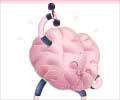Economic prosperity may result in increased strokes risk due to subsequent changes in lifestyle and healthcare, according to a new study.
According to the new study in China, the rate of ischemic strokes in the country increased by nearly 9 percent per year between 1984 and 2004, though the overall increase in the stroke rate and risk of death decreased.
'The changes in the stroke rate and stroke mortality occurred during a time of rapid economic development and growth in China that greatly changed people’s lifestyles and healthcare,' said Dr Dong Zhao, lead author of the study.
He said that changes in patterns of stroke have raised new challenges to control risk factors such as high blood pressure, high cholesterol, diabetes and obesity.
Advertisement
The team examined that the data from the Sino-MONICA (Monitoring Trends and Determinants in Cardiovascular Disease) Project, Beijing, that studied the occurrence and mortality rates of stroke and heart from 1984-2004.
Advertisement
The analysis revealed that there were 14,585 strokes in people between 25 to 74 years of age. The rate of ischemic strokes raised by 8.7 percent per year.
The fat consumption and cholesterol increased from 88.1g/day in 1983 to 97.4g/day in 2002 and average blood cholesterol levels increased by 24 percent from 1984 to 1999 that led to 77 percent increase in ischemic heart disease deaths.
Moreover, diabetes incidence increased by 97 percent from 1994 to 2002, while obesity increased by 13 percent in urban areas and by 85 percent in rural areas. These factors may have contributed to the transition in stroke rate and mortality.
The report appears in Stroke: Journal of the American Heart Association.
Source-ANI
SRM/L











